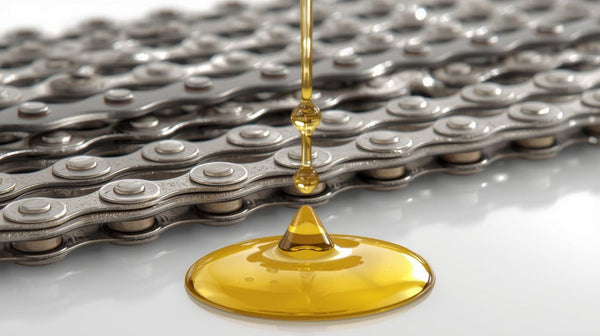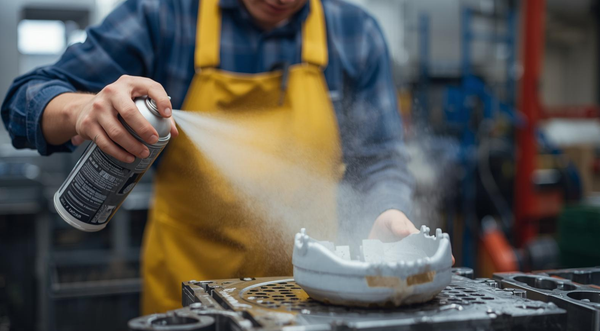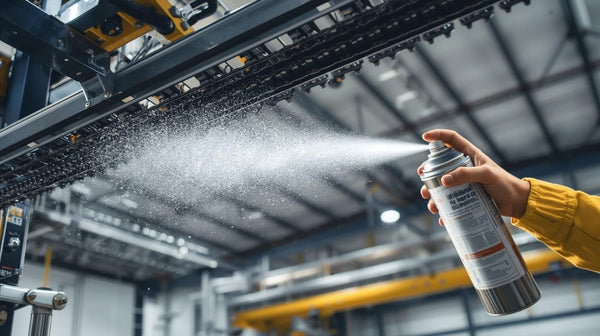Dry lubrication processes and methods of creating a lubricating film owe their great development to the development of the space program, where limiting the effects of linear and rotational friction in extreme conditions was of strategic importance. Dry lubrication is desirable wherever sliding movements occur between metal-metal contact, and other lubrication methods and thus methods of reducing friction and wear of metal surfaces are difficult or even impossible.
Solid film lubricants can be categorized by the composition of the solid particles used, the media in which they are dispersed, and the type of binder used in the formulation. Some film lubricants are pressed into the metal structure mechanically, others air dry , and others require oven drying to achieve maximum thickness or adhesion .
Other molybdenization methods are also widely used, in particular: molybdenum electroplating , molybdenum anodizing , molybdenum passivation , non-aqueous media , ionic liquids , vacuum deposition .
Molybdenum is a silvery metal that is located between chromium and tungsten in group 6 of the periodic table of elements.
Dry and solid lubricant based coatings are a desirable alternative to liquid lubricants to minimize friction and prevent galling and abrasion , particularly in high or low temperature environments where liquid lubricants may freeze or evaporate .
In today's considerations, we will focus on one method of molybdenizing friction surfaces in the form of mechanical pressing of micronized molybdenum disulfide MoS2 into the metal structure . We write extensively about the properties of molybdenum on the website: https://sklepsmary.pl/blogs/aktualnosci/molibden-wlasciwosci-ogolne
Briefly, I will just remind you that, like graphite , molybdenum disulfide (MoS2) has a layered hexagonal crystallographic structure , which gives it low shear strength and very high lubricating properties . Its temperature resistance is similar to graphite: +400°C and very good mechanical properties mean that it can be used for permanent lubrication of small elements even under very high loads . In addition, MoS2 is an extremely efficient dry lubricant , thanks to the effective range of particle sizes (1 to 100 µm) and a very low coefficient of friction (≤ 0.1).
The basic goal that we want to achieve by molybdenizing a metal surface using a mechanical method is to create a molybdenum coating on the treated surface and reduce friction by co-deposition of molybdenum particles in the nanocrystalline surface. Although this is undoubtedly a time-consuming and troublesome process, the effects are so positive that it is often used in industry.
This applies in particular to lubrication nodes that are difficult to access, such as pins in chains , or dangerous ones, such as molybdenum coating of bullets used in sniper weapons, or molybdenum coating of journals in heat and power plants or engines in competitive sports. Dry lubrication is recommended everywhere due to the difficulties in accessing the lubricant, and such an emergency lubrication method is recommended despite the time-consuming and expensive method of lubrication.
The exceptionally low coefficient of friction that we obtain after molybdenization allows us to avoid excessive friction and its consequences , such as the formation of high temperatures, scuffing phenomena and premature wear of the machined parts. The applied microcoating is permanently deposited on the surface of the machined parts and cannot be removed without simultaneously removing part of the substrate itself.
Parts and surfaces to be mechanically coated with molybdenum must be prepared in such a way as to ensure a good micron-level bond between the molybdenum structure and the metal particles.
The surface prepared for molybdenization must be cleaned of grease, oil, dust, etc. by immersion in solvents or alkalis, by manual application (using materials such as brushes), ultrasonic washing or biological type cleaners which clean by "eating" the dirt.
Surface roughness, which allows the molecules to anchor in the surface irregularities and thus give the interface good mechanical adhesion, is not required because we use mechanical force to connect and cooperate two surfaces (e.g. rubbing, impact with molybdenum as in sandblasting).
After impact or mechanical rubbing into the surface, the dry lubricant is pressed onto the surface and fuses with it, creating a new structure on the surface with a very low coefficient of friction and new technological parameters that are not exposed to particle flaking.
The friction properties of the surface coatings created in this way are controlled by their chemical composition and microstructure, such as crystallinity and grain size distribution, therefore it is important to use top-shelf molybdenum powders, especially those with very low grain size, to obtain the desired effect. Coarse-grained molybdenum can act like fine sandpaper and not bring the desired effect.
In addition to molybdenization, dry lubrication processes by mechanical impregnation of metal surfaces are used with other compounds, including: graphite , molybdenum disulfide (MOS2) or tungsten disulfide (WS2), boron nitride . All these procedures cause molecular bonding, and thus very strong adhesion of lubricant particles to the machined surfaces. Most often, these processes are based on air compression systems to achieve supersonic speeds and powder bonding with the metal structure.
Other commonly known methods of applying molybdenum coatings are:
Molybdenum electroplating which involves coating molybdenum in an aqueous solution on iron, nickel or carbon substrates, molybdenum anodizing which provides a protective coating for aluminum substrates, converts the metallic surface to a ceramic state by oxidation.
Another widely used method is molybdenum passivation.
Passivation is a two-step post-production process: the first step is pickling, which cleans the surface by removing oils and other contaminants. This is followed by immersion of the substrate in a passivation bath, which deposits a thin protective layer that essentially restores the metal surface to its original state.
An alternative to the above-described methods of applying molybdenum coatings are water-based molybdenum coatings and
a Non-aqueous media: the basic method of depositing a molybdenum coating using non-aqueous media is the electrolysis of fused salts
b Ionic fluids: Ionic fluids are formed by the delocalization of ionic charge, which causes a decrease in the energy of the crystal lattice.
c • Vacuum Deposition. Various vacuum deposition technologies are currently in use, including physical vapor deposition (PVD), PVD by vacuum evaporation, PVD by sputtering, ion plating, and several others.
We decide which method to use for our application based on working conditions, our financial resources and the expectations we have from the molybdenum layer.
Molybdenum products used for surface coating:
Lubrifiant Ambersil Dry Moly, Graisse MoS2 ITW, LOCTITE 8191, LUBRIFIANT SEC AU BISULFURE DE MOLYBDENE EN AEROSOL MOLYDAL, LUBRI MoS2 PS 2262 MOS2, Molybdenum Disulfide (MoS2) Aerosol Spray, DRY MOLY Spray ROCOL, Grasso Spray al Bisolfuro Molybdeno Ambro-So , Grease with molybdenum disulfide – TermoPasty, Molyslip Dry Moly Spray Aerosol , Molyfilm Kano, Molybdenum disulphide Cofan , MoS2 penetrating oil Molydal, Solent Maintenance EP Open Gear Aerosol with Molybdenum Lubricant, Petrelplus Molypet-Molybdenum MOS2 Spray, Moly (MoS2) Aerosol Spray IKV Lubricants , SealXpert Moly G-Rapid Spray, Phillips Molybdenum Gun Lubricant-100ml Aerosol, Dry Moly Lube Molybdenum CRC, Ambersil Dry Moly Lubricant Aerosol Spray, Fuchs Gleitmo 900, Suresta Moly Chain Oil Spray, Jet-Lube Marine Moly, BRUGAROLAS BESLUX MOLYSPRAY, CRC Molybdenum Disulfide Dry Film, Molybdenum LB 8017, Solent Maintenance SD1-500B, MO-DI Dry Film Moly Spray, Action Can Dm-90, SCHAEFFER"S 202 Moly 5th Wheel, MOLYKOTE D-321 R, Molykote Powder Spray, CPI DRY MOLY AEROSOL LUBRICANT, Universal Spray-On Grease with MoS2 Weicon, Lubricant Chain Liquid Gold Coast Chemical, 12014 MOLY-SPRAY Dry Film Lubricant, Orapi 700 Moly Spray, MOLI-GUARD – Dry Lubricant Spray.















